The HTC 10 Review
by Joshua Ho on September 19, 2016 8:00 AM ESTCamera Architecture and UX
The camera of the HTC 10 is one of the most important aspects to examine. While the HTC One M7 was a big leap forward for HTC, in the years since we’ve seen a general stagnation on HTC’s part. The One M8 was effectively identical to the One M7 for the rear camera other than the addition of a depth-sensing camera and the deletion of OIS. The One M9 shipped with a camera that was a disappointment at best due to a lack of OIS and extremely poor image processing algorithms. The lack fast auto-focus mechanisms like phase-detect AF and rangefinder-guided contrast AF also significantly impacted the user experience, as did the long focus and capture times. While there were a lot of problems with the One M9, the poor camera was one major dealbreaker. Even if RAW output could be respectable, it’s impossible to recommend a phone when you have to boot up a laptop to process an image any time you want something to share on social media.
While HTC could continue to ship mediocre cameras, it’s probably not a far leap to say that doing so would make them irrelevant in the high-end smartphone market when devices like the Nexus 5X, OnePlus 3, and iPhone SE are all shipping pretty great cameras for less than 400 USD. To figure out whether the HTC 10’s camera is competitive, we can start by looking at the basic specs of the camera before diving deeper.
| HTC Flagship Cameras | ||||
| HTC One M9 | HTC 10 | |||
| Front Camera | 4MP | 5.0MP | ||
| Front Camera - Sensor | Omnivision OV4688 (2 µm, 1/3") |
Samsung S5K4E6 (1.34 µm, 1/4") |
||
| Front Camera - Focal Length | 3.82mm (26.8mm eff) | 2.34mm (23mm eff) | ||
| Front Camera - Max Aperture | F/2.0 | F/1.8 | ||
| Rear Camera | 20MP | 12MP | ||
| Rear Camera - Sensor | Toshiba T4KA7 (1.12 µm, 1/2.4") |
Sony IMX377 (1.55 µm, 1/2.3") |
||
| Rear Camera - Focal Length | 4.73mm (27.8mm eff) | 4.58mm (26mm eff) | ||
| Rear Camera - Max Aperture | F/2.2 | F/1.8 | ||
At a high level, it seems that HTC has learned a lot from their previous cameras in a lot of ways by integrating a high-quality sensor, as well as a laser auto-focus module. The IMX377 isn’t necessarily anything new, but HTC’s use of a wide aperture distinguishes it from other devices using the same sensor. Really, the only notable point of concern here is the 26mm equivalent focal length which makes for a very wide field of view. While this may sound like a good thing to have, generally speaking it seems that reducing focal length is generally done to reduce the thickness of the optics stack. Combined with the wide aperture I suspect that this may affect overall performance. The HTC 10 already has a noticeable camera hump so I suspect that increasing this hump to improve optical performance wouldn’t be that noticeable.
Overall, the architecture of the camera on the HTC 10 isn’t necessarily exotic, but it’s starting at a good place. The large sensor, pixel size, and wide aperture along with OIS should mean good things for low light sensitivity and laser AF should make for fast focusing if done right. The improved ISP in the Snapdragon 820 should also help with image processing quality, but this is conditional on whether HTC has done their part. I should also mention that the front-facing camera is automatically one of the best I’ve ever seen on the basis of having an actual VCM and OIS which allows for the camera to actually focus on a subject rather than focusing at infinity.
Before we get into image quality though I want to discuss the user experience that comes with using the camera on the HTC 10. The easiest place to start is the camera application itself, which launches quickly. However, the gesture to launch the camera application is swiping downwards twice on the display. This gesture works, but it’s honestly fairly slow and I suspect that a double press of a volume button with the screen off would be a much faster gesture. Other than this issue though, the camera app launches fast enough that the latency doesn’t stick out as a sore point.
Getting into the camera app itself, the UI has been significantly updated relative to previous devices. While the UI is going to be immediately familiar and easy to use for pretty much anyone, it retains a clean look that is generally not seen in Android devices. Following with navigation conventions for Android, rather than placing an overflow button in the UI there is just a slide-out drawer for all of the settings and camera modes which is simple and clean. The only real complaint I have here is that pressing the back button will exit the camera app entirely rather than close the overflow drawer, which is somewhat unnatural.
The extra camera modes are also generally implemented sensibly, but from a UX perspective the Zoe camera mode is not the best as Google’s photo gallery application doesn’t integrate the 720p video and photo into a single “photo” as seen in previous implementations of Zoe with HTC Gallery, and similar features on other devices. Pro mode continues to be included and while the ability to change all sliders all at once is kind of interesting to have, practically speaking it really just makes it easy to clutter the screen with a bunch of sliders. I’m not totally sold on the design of the Pro camera mode, but this is mostly a minor complaint so I wouldn’t put too much emphasis here.
Other than some minor usability issues I honestly didn’t find a lot wrong with the design of the camera application. HTC isn’t doing anything that sticks out as exceptionally poor here, and there is a noticeable level of restraint as the camera application isn’t overflowing with random camera features that you probably won’t use. The camera app works well for the most part, and UX niggles like the over-sensitive laser AF block detection have been resolved. There is always room to improve with things like only presenting one slider at a time in pro mode and setting the back button to close the settings drawer instead of closing the camera app, but these are things that would probably take a few days of implementation and testing at most.
The final point in the user experience I want to talk about before we get into discussions of video and image quality is the speed of the HTC 10’s camera with regard to capture and focus latency. It’s probably not entirely unfair to say that poor latency in this regard can ruin the experience because poor auto-focus and capture latency make it easy to miss the moment you want to capture. While our testing is inevitably going to be a phone sitting perfectly still in a tripod with a fairly obvious focus target the reality of real-world use is going to be taking out a phone, opening the app, and waiting maybe half a second for the device to focus before tapping the capture button and putting the phone away. In order to try and include this as a part of the evaluation process we test how quickly the device can focus and capture on our standard ISO chart in strong lighting conditions at base ISO.
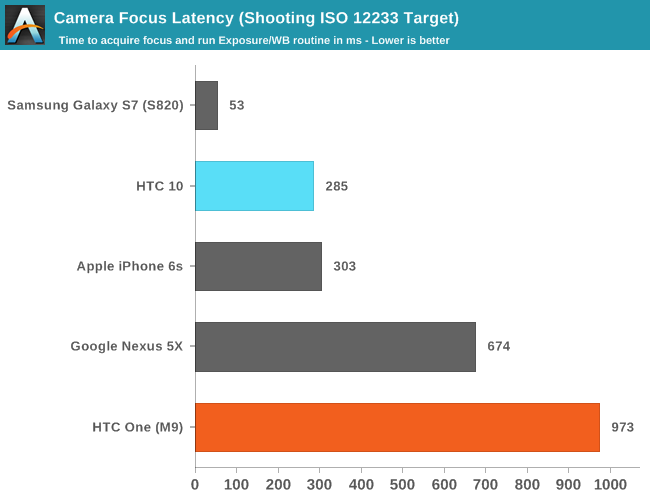
Looking at the focus test HTC has improved dramatically since the One M9 in daytime as the time of flight sensor allows for some estimation of where to focus before contrast detection does the fine adjustment. While it is faster than the iPhone 6s in daytime scenarios what should be noted here is that HTC’s contrast AF algorithm seems to be honestly rather poor in low light even with laser AF helping to guide the contrast AF search. The speed isn’t really the problem, but I’ve just seen it miss time and time again in low light scenarios and this is a major disadvantage relative to the Galaxy S7, iPhone 6s, and LG G5. While it’s probably no surprise that the Galaxy S7 is just better by miles due to the 12MP of phase detection pixels, the iPhone 6s and LG G5 shouldn’t be clearly superior to the HTC 10 here.
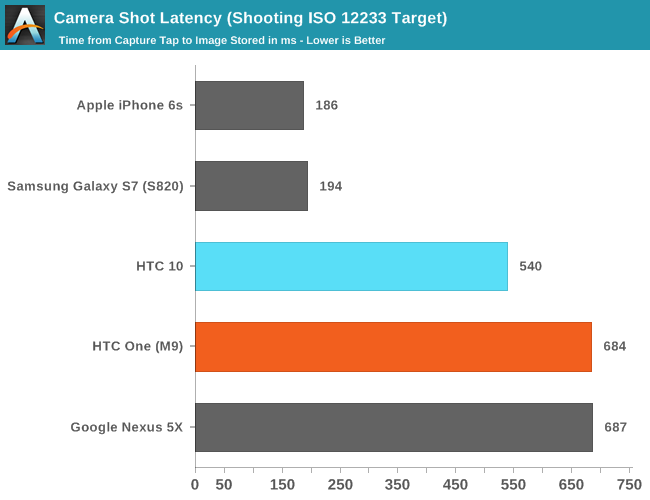
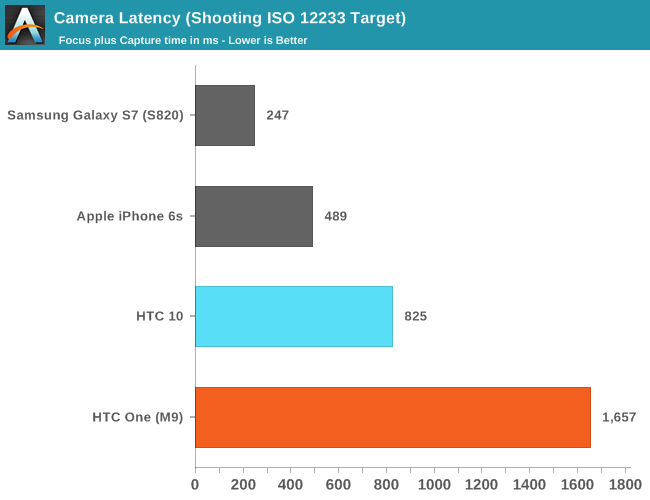
In capture latency the HTC 10 is appreciably faster than the One M9 to the extent that it feels about as fast as the One M8 but it’s still not really that quick. It might be appealing to point the blame at the eMMC used but the HTC 10 has highly variable capture latency even in daytime scenarios. While profiling will give the data that engineering needs to actually get to the bottom of this, I suspect that HDR processing is the bigger bottleneck here as capture latency tends to be significantly reduced if you disable HDR.
Overall, the HTC 10 has a decent base for a camera. It’s not going to win awards for innovation, but as OEMs converge on the “ideal” camera I’m not really sure that innovation really matters anymore so much as integration and execution. In that regard, HTC is doing the best that they’ve ever done, with a large sensor in both total area and pixel size, decent resolution, a clean and intuitive camera UI, and competitive camera latency. Relative to the competition, I would say that the Galaxy S7 is clearly better on the basis of dramatically lower latency, but relative to other devices the HTC 10 puts up a respectable showing. The only area that really needs attention by the next generation would be more reliable contrast AF in low light.


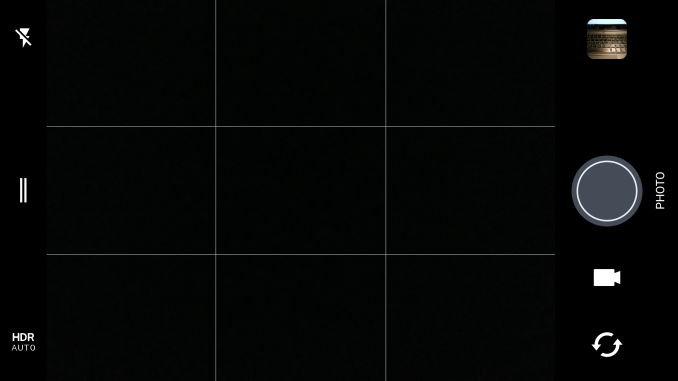
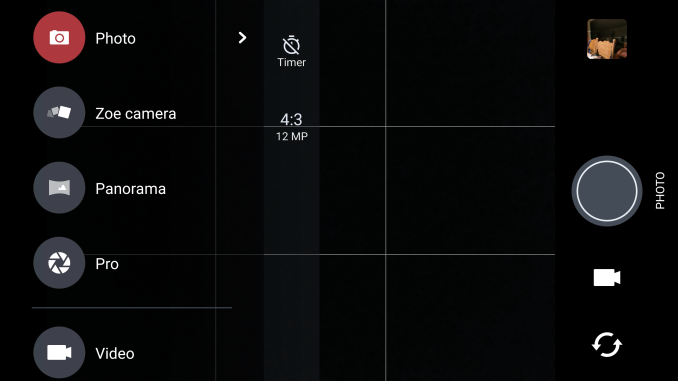
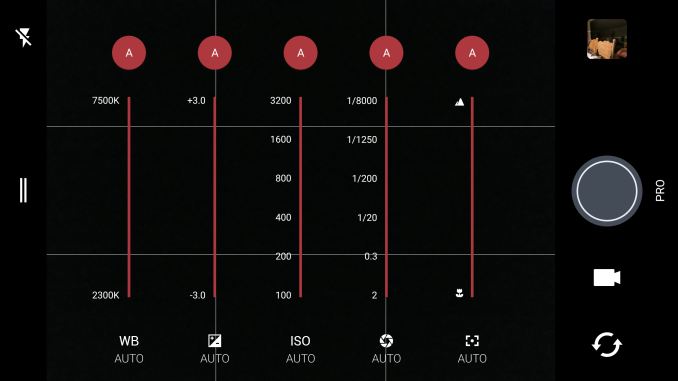
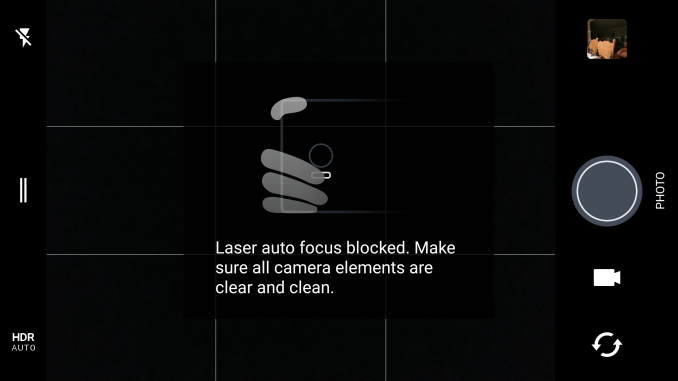








183 Comments
View All Comments
MobiusPizza - Tuesday, September 20, 2016 - link
Gosh that sentence is quite a mouthful
asfletch - Tuesday, September 20, 2016 - link
Agreed. Also re the content - is it surprising to anyone else that UFS solutions don't have a clearer advantage over eMMC? I mean my 2014 Note 4 gets about 19/7 on Random Read/Write with the same Androbench settings. According to these charts, that's better than the current Note 7. Also the HTC 10 here on test beats all of the UFS phones handily for Sequential Write speed.What's up with that? Is it the benchmark?
Guitahero - Tuesday, September 20, 2016 - link
What happened with the deep audio analysis from anandtech?JKJK - Tuesday, September 20, 2016 - link
Indeed! I miss them too!winjay - Tuesday, September 20, 2016 - link
"for its size I don’t believe there’s another Snapdragon 820 device with better battery life."Sony usually does wonders with battery life. Have you checked Xperia XA battery life?
Vagabondjonez - Tuesday, September 20, 2016 - link
with a 2k display he probably meantwinjay - Tuesday, September 20, 2016 - link
Also this phone is said to have an amazing DAC. How is the audio output?Ro_Ja - Tuesday, September 20, 2016 - link
The front looks like a Samsung Galaxy.amosbatto - Wednesday, September 21, 2016 - link
This review (and every other review I have ever read) doesn't cover the most important issue, which is the longevity of the phone. Here are the issues which I suggest that a review should cover:1. We all know that the battery will die after 2 years. Every phone which has a replaceable battery should automatically get a higher rating, just because it will probably last longer than one which doesn't. If a phone has a sealed case, the reviewer should try to open the case and give readers an idea how hard it will be to replace the battery. If the case is glued together, if the battery is glued to the case or if it is impossible to buy replacement batteries on the internet, then the review should let us know.
2. Reviews should emphasize the amount of storage space a phone has and how expandable the phone is, because this has a big impact on how long the phone will last. If a phone is limited to 32 gigabytes of storage, then the phone will probably not last more than 2 years, because people tend to buy new phones once they run out of space. Trying to decide what apps to uninstall, what music to remove, what photos to delete, etc. is such a painful process, that many people simply buy a new phone. Reviews should really knock phones which don't have a MicroSD slot to expand storage and I would love to see some benchmarking on the difference in speed between the internal NAND and a normal MicroSD.
Frankly, I wish that smartphone manufacturers would offer us phones with two MicroSD slots, where one is used to expand the storage for apps on the phone and the second is the memory that we can remove to transfer files to our PC.
Another thing that reviews should cover is how hard is it insert and extract a MicroSD card. On my HTC Sensation from 2011, it was very easy to pop the MicroSD card in and out of the computer, but it can't be done without a special tool on my Moto X Pure Edition. Not a single review ever covers how hard it is to insert and extract the MicroSD card, but this is essential information for people like me who intend to keep their phones for many years.
3. Every review should mention how good the manufacturer is about offering security updates and OS upgrades to its phones, which are essential for extending the life of the phone. HTC has an excellent track record of offering fast updates when a new version of Android is released, whereas Samsung does not. Every review comparing an HTC phone to a Samsung phone should mention this difference, because it will influence the buying decisions of people who care about the longevity of their phones.
4. Another way to extend the life of a phone is to install an OS that doesn't come from the manufacturer. If the manufacturer stops offering upgrades, then we have the freedom to install CyanogenMod or another mod to get the new features in the latest version of Android. No review ever covers how hard it is to unlock the bootloader and install a mod in the phone, but this is essential information for a phone buyer who wants to be able to keep upgrading the phone. Does the manufacturer offer for free the code to unlock the bootloader and does it have a policy of voiding the warranty if a mod is installed? Five years ago when I bought my Sensation, HTC had the best mod policies in the industry, but I have no idea who is best today and this review didn't mention it.
Another piece of essential information is how standard the hardware is and how likely mods will be developed for the phone. For example, the SoC on the HTC 10 is a standard Qualcomm Snapdragon 820, so it is highly likely that mods will be made for this phone, whereas it is highly unlikely that mods will ever be created for a custom SoC made by Huawei, Samsung or Apple. Yes, that custom SoC probably processes a couple milliseconds faster, but frankly most people will never notice the difference.
5. Another way to extend the life of a phone is to turn it into a PC. I frankly don't see the point of buying a flagship phone like the HTC 10 which costs $600, but I might consider it if I know that it can be used as a low cost PC. Kudos to this review for at least mentioning that the HTC 10 supports Slimline and Android 7, but it doesn't explain why that is important. The phone has the necessary hardware and software to be hooked up to a monitor and bluetooth keyboard and mouse, so it can be used as a PC with multiple windows and a mouse pointer. I would have loved to read a review about how well this works with the HTC 10.
Reviewers spend an inordinate amount of time covering differences in processing speed and other minutiae which most people will never notice when using a phone, but they don't provide the most essential information to help people choose phones with long lifespans. Part of the reason is that reviewers are the type of people who get a new phone every year, so they don't worry about the battery wearing out. However, I think a more important factor is that fact that sites like AnandTech rely on advertising from the same manufacturers who they are reviewing. Manufacturers of smartphones and other electronic devices promote planned obsolescence as a way to increase their sales. A reviewer who dwells too much on the fact that a phone is designed to be thrown away after two years probably won't get much advertising and is unlikely to get free samples to review.
Apple has always had some of the worst policies in the industry in terms of planned obsolescence, but within the last 5 years the entire phone industry has started to copy Apple in designing sealed black boxes which are difficult to open and even harder to fix. Yet, I have not seen a single review of the iPhone 7 or any of the other recent smartphones which even mentions how hard it is to fix the phone or even replace the battery. If the reviewers don't mention it, then consumers won't think to check and the phone industry will conclude that consumers don't want fixable and modifiable phones, so they will offer more and more Apple-like devices.
Extending the life of smartphones is not just a way to save consumers money. One of the biggest ecological problems on the planet is the fact that 1.5 billion smartphones will be manufactured this year and most of them will be junked within 2 years. More smartphones are manufactured today than all the other ICT devices combined (servers, routers, desktop and notebook PCs, tablets, gaming consoles, cameras, televisions and advanced wearables). The amount of energy, metals and other vital resources which are wasted every year in making throwaway devices is astounding. If we estimate that the average smartphone and its charger weighs 150 grams, that means we are generating 225,000 metric tons of eventual e-waste every year, which is toxic and needs special treatment.
Even more alarming is the amount of greenhouse gas emissions being generated to manufacture all these smartphones. Apple estimates that 83.6 kg of CO2-equivalent were emitted to manufacture and transport its iPhone 6 to point of sale, whereas using an iPhone for a year emits 3.5 kg CO2-e and recycling it at the end of its life emits 1.0 kg CO2-e. Of course, Apple didn't include all the energy to operate the cell towers, internet servers and routers, etc. that are used by an iPhone, but manufacturing a smartphone clearly has far more environmental impact than using it, so the best way to lower the environmental impact is to make the phone last as long as possible in order to avoid manufacturing a new phone.
Apple does not explain how it calculates its emissions, but it is highly likely that Apple did not include the SF6 which was emitted in manufacturing its screens or all the other types of greenhouse gases which often get overlooked. It also probably doesn't include in its emissions all the advanced processing to make the ultrapure chemicals, water and gases which are used in silicon and flat screen fabs. Today's crop of smartphones probably have an even higher environmental impact, considering that they are using larger screens, more memory and more processing cores than the iPhone 6, which had a 4.7in screen, 1 GB of RAM and 2 processing cores. Now-a-days, 5-6in screens, 2-4GB of RAM and 4-8 processing cores are the norm, so we can conservatively estimate that manufacturing today's smartphone will emit 100 kg CO2-e. For the 1.5 billion smartphones produced in 2016, that means 150,000 metric tons of CO2-e.
Allan_Hundeboll - Wednesday, September 21, 2016 - link
You def. have a point